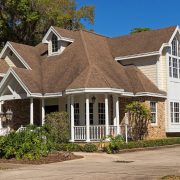As a property investor, you must keep a close eye on the macro and microeconomic aspects of the housing cycle and be aware of its current state.
Housing Cycles make property investment very complex. The excellent thing is that there are tactics to assist you in making the most of every stage of the real estate cycle, so it’s feasible to succeed as a large sum of money is involved. You need to invest by keeping in mind the stage. Please view here to understand the different stages of the housing market.
The housing market cycle and the economy overall are strongly related. However, you shouldn’t presume that the real estate market is booming and start investing without knowing whether the economy is healthy and how the commercial real estate sector is doing.
First, people should have a fair idea about the phases of such a cycle that have been discussed thoroughly in this blog.
Phase 1: Recovery
The market exhibits recessionary traits while it is in the recovery period. Spending is low, the unemployment level increases, and housing prices decrease. No new buildings are seen in this phase, and occupancy diminishes. More renters want to negotiate and close the lease deals.
There may also be an overabundance of bankruptcies available. The astute investor looks to purchase new properties at this time. Decreasing rent growth assists in lowering occupancy rates as the housing business adjusts to eventually meet the demands of the future of real estate and new developments in the construction industry.
Phase 2: Expansion
Market momentum and employment growth are both robust when the situation changes to the point of expansion. The fundamental supply and demand law is applied when there is a shortage of property. House prices and rental prices rise as occupancy rises. The economy strengthens, employment expands quickly, and homes and rental spaces are in higher demand.
The people will begin to rebuild faith in the economy throughout the growth stage. As a result, the housing market and individual tenants and purchasers of homes will restart creating desire. When the business grows, it makes sense to put your energy into renovating houses that appeal to the tastes of the moment and fetch a premium over their market rates.
Phase 3: Hyper Supply
This is the phase where the vacancies and the availability of housing facilities are high. Demand rises because of buildings coming up and an oversupply of spaces to buy or rent. The economy pulls back, and rent rates grow at declining levels. In order to avoid having their buildings sit empty or unoccupied, landowners frequently sell their stock. This is an excellent opportunity to adopt an opportunistic strategy; You need to choose homes where you are certain that stocks will rise and the upcoming real estate cycle will perform better.
Phase 4: Recession
A recession is when vacancies start to rise due to excessive inventory being accessible and economic growth declines, the industry is regarded as being in a recession. Rent increase seems to be either negative or falls underneath the inflation rate during the time of a recession.
Buying foreclosed homes at a significant discount is possible during this phase. There will be more new buys that are homes that creditors have seized after foreclosing on them. They are prepared to go on the marketplace as soon as the market starts to recover, and you need to play slowly with your buys and properties and wait for it to be over.
Understanding the four phases in housing market cycles helps determine your property investment of buying and selling. Please focus on each phase closely before deciding on the investment.




















